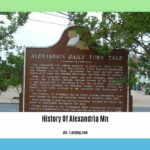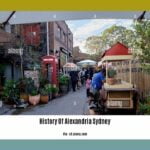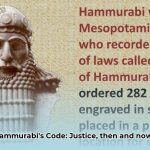Have you ever heard the legendary tale of the Library of Alexandria? Forget the simplistic narrative of a fiery inferno consuming all knowledge. The real story is more complex, fascinating, and relevant than you might imagine. It’s a cautionary tale about the fragility of knowledge, yet it’s also an inspiring story about humanity’s relentless pursuit of understanding. We’ll explore the true extent of the library’s destruction, the impact of its loss, and the vital lessons we can learn for safeguarding our knowledge today. For more on lost ancient libraries, see this list of other lost libraries.
Beyond the Flames: Decoding the Enigma of Alexandria’s Loss
The Library of Alexandria. The very name evokes images of a vast repository of ancient wisdom, a testament to the collective knowledge of humankind. But what exactly vanished when this iconic institution met its end? The popular narrative often focuses on a single cataclysmic event, a dramatic fire that obliterated countless scrolls. The reality, however, is far more intricate, a slow, agonizing decline stretching across centuries. Was it a sudden, devastating blow, or a long, drawn-out process of decay?
Envision a sprawling, ancient orchard. The most robust trees – the works of Homer, Plato, and other literary giants – survived, their fruit (copies of their texts) transplanted and cultivated in other gardens (libraries and centers of learning). But countless saplings, representing lesser-known works, innovative ideas, and unique perspectives, were lost forever. It’s this complexity that makes unraveling the enigma of Alexandria’s true loss so challenging.
The Slow Decay: Factors Contributing to the Downfall
Multiple factors contributed to the library’s demise. Political instability, economic decline, religious conflicts, and accidental fires all played a role. The infamous fire during Julius Caesar’s siege of Alexandria is often cited, a dramatic event frequently sensationalized in historical accounts. However, this fire, even if substantial, likely didn’t completely destroy the library. The library’s end was a protracted process, a gradual erosion of its collection and influence.
Consider the library not as a single monolithic structure, but as a complex of buildings, possibly spread across various locations within Alexandria. Visualize the slow deterioration – scrolls decaying from age and neglect, the slow but steady loss of invaluable information. Knowledge also migrated, finding refuge in other centers of learning throughout the Mediterranean world. The library wasn’t merely a building; it was an organic network, a dynamic system for preserving and disseminating knowledge on an unprecedented scale.
Lost Voices: Evaluating the Irretrievable and the Enduring
We know the library housed a vast collection of scrolls. Estimates range from tens of thousands to hundreds of thousands, underscoring the significant gaps in our knowledge. What types of works did it contain? Philosophical treatises? Scientific breakthroughs? Historical chronicles? Dramatic plays and epic poems? An entire universe of human thought and creativity is now beyond our reach. We can only attempt to reconstruct this lost world from the surviving fragments.
Existing works from antiquity offer tantalizing clues, but they are merely snapshots, glimpses into a literary landscape that can never be fully recreated. This is the heart of the dilemma: the loss of countless unknown authors – potentially brilliant minds, revolutionary thinkers – whose voices have been silenced by time. It’s these lost voices that haunt us, whispering of what might have been.
A Lingering Echo: The Enduring Legacy of Alexandria
Despite the uncertainty surrounding the precise details of its destruction, the significance of the library’s loss remains profound. Its enduring influence extends far beyond the specific books that were lost. It stands as a symbol of humanity’s relentless pursuit of knowledge, our inherent drive to collect, preserve, and share information. The legend of its destruction serves as a powerful cautionary tale, reminding us of the fragility of knowledge, while simultaneously inspiring us to safeguard our intellectual heritage. The modern Bibliotheca Alexandrina, a magnificent structure rising from the sands of Egypt, serves as a potent symbol of hope, a testament to our ongoing commitment to learning and discovery.
The Quest Continues: Ongoing Research and Discovery
Although we can never fully recover the library’s complete collection, research continues. Scholars tirelessly search for surviving fragments of lost texts, piecing together the puzzle of what was contained within those ancient walls. Archaeological digs in Alexandria continue to unearth new clues, adding another layer to our understanding. It makes you wonder what other treasures might be unearthed, what other secrets might be revealed. This collaborative project demonstrates human curiosity and the enduring quest for knowledge.
So, what truly was lost in the destruction of the Library of Alexandria? It’s not just the physical scrolls, but the countless opportunities, the untold stories, the potential scientific breakthroughs that were lost forever. A vast reservoir of human knowledge vanished, but the legacy of that effort—that unwavering drive to preserve knowledge—remains. And perhaps that’s the true measure of the loss: not just what was lost, but what might have been discovered or created based on that lost knowledge.
Unraveling the Mystery: Quantifying the Unquantifiable Loss
The destruction of the Library of Alexandria wasn’t a swift, decisive event, but a gradual decline spanning centuries. This makes how to estimate knowledge loss from the library of alexandria an incredibly complex and challenging endeavor. How can we quantify the immeasurable? How can we assign a value to what is, in essence, an absence?
The Puzzle: Missing Pieces and Elusive Answers
We know the Library was vast, potentially housing hundreds of thousands of scrolls. But did these scrolls contain unique works, or simply multiple copies of already-circulating texts? This question lies at the heart of the debate. Think of it as a massive jigsaw puzzle – we’re missing countless pieces, and even the box top (a complete catalog or inventory) is gone. We can reconstruct parts of the image—we have surviving fragments, references in other works, and archaeological evidence. But the full picture, the complete scope of its contents? That’s forever lost to us.
Separating Fact from Speculation: Data and Uncertainty
We have some solid facts to work with:
- The Library was a major center of Hellenistic knowledge – encompassing literature, philosophy, science, mathematics, and more.
- Its demise was a drawn-out process, not a single catastrophic event. Multiple factors played a role: fires, political turmoil, and shifting cultural priorities.
- No complete catalog of its holdings has survived. This single absence is the biggest obstacle to precisely estimating the losses.
However, significant uncertainties remain regarding how to estimate knowledge loss from the library of alexandria:
- How many unique works were contained within its walls?
- How many copies of those works existed elsewhere in the ancient world?
- What was the nature of those “lost” works—groundbreaking scientific theories, insightful philosophical treatises, or straightforward commentaries?
Approximating the Loss: Methods and Approaches
How to estimate knowledge loss from the library of alexandria remains a daunting challenge, akin to piecing together a shattered vase from a handful of shards. Scholars employ a variety of indirect methods to approximate the extent of the loss.
- Textual Analysis: Researchers meticulously examine surviving fragments of Alexandrian texts, searching for cross-references and mentions of works that are now lost. These references provide valuable glimpses into what may have existed within the library’s collection.
- Comparative Methodology: By comparing the surviving literary and scientific landscape of the ancient world with what we know of the Library’s holdings, scholars can identify areas where works are conspicuously absent, suggesting potential losses.
- Archaeological Evidence: Excavations within Alexandria’s ruins can provide valuable clues about the physical extent of the library, its organization, and potentially even the types of documents it housed. However, archaeological evidence provides more general information.
The results of these investigations are often suggestive rather than definitive. We can make educated guesses, but the lack of concrete evidence makes precise quantification elusive.
Beyond Numbers: The Significance of Qualitative Loss
Beyond simply counting scrolls, there’s a more profound question: what kinds of knowledge were lost? The sheer volume of lost material isn’t the only factor to consider. The nature and significance of the lost works are equally important.
Consider this analogy: the loss of a single manuscript containing a groundbreaking scientific theory is qualitatively different from the loss of dozens of copies of a popular novel. The former represents a lost opportunity for scientific progress; the latter, a loss of entertainment. Similarly, the irreplaceable component of the lost library wasn’t just the texts themselves, but the intellectual context they provided—the commentaries, the lost debates, and the unwritten innovations that were forever extinguished.
Estimating Total Knowledge Loss: Key Points to Remember
- The destruction of the Library of Alexandria was a gradual process, not a single cataclysmic event.
- Estimating knowledge loss is extremely difficult due to the lack of a complete catalog and other primary source materials.
- Scholars employ a variety of techniques (textual analysis, comparative studies, archaeological investigations) to assess the extent of the loss.
- The loss goes beyond mere numbers; unique, potentially groundbreaking works and unrecorded ideas were likely lost forever.
Preservation Strategies: Lessons from Alexandria for Safeguarding Our Future
Key Takeaways:
- The narrative of the Library’s sudden, catastrophic destruction is an oversimplification. It suffered damage and decline over centuries.
- The exact extent of the loss remains uncertain, fueling ongoing historical debate.
- The Library’s significant impact on knowledge dissemination is undeniable.
- Proven Tactics For Preserving Cultural Heritage- Inspired By Alexandria can be gleaned from examining this complex history.
Reframing Catastrophe: Beyond the Myth of Instantaneous Loss
The image of the Library of Alexandria engulfed in flames is powerful – a symbol of sudden and irreversible loss. But how accurate is this image? Historians increasingly suggest a more nuanced reality. The Library likely wasn’t destroyed in a single event, but suffered a slow, agonizing decline over many years. It’s a story of slow decay, not sudden annihilation.
Identifying the Culprits: Multiple Causes, Not a Single Catastrophe
Several factors contributed to the Library’s ultimate demise. Julius Caesar’s siege undoubtedly caused damage. Later conflicts, political instability, economic decline, and religious conflicts also played a role. The destruction of the Serapeum, a significant temple and a possible extension of the Library complex, represents a pivotal moment in this decline.
The Great Unknown: What Was the True Extent of the Loss?
Determining the precise extent of the Library’s loss is an impossible task. Estimates vary wildly, and concrete evidence is lacking. Was every known book housed within its walls? Probably not. The concept of a “universal library” is perhaps a later embellishment, a romanticized ideal. Yet, its collection was undoubtedly immense, a priceless repository of ancient knowledge. The specific treasures that were permanently lost may never be known.
Proven Tactics For Preserving Cultural Heritage- Inspired By Alexandria: Lessons Learned
The Library of Alexandria’s story offers invaluable lessons for preserving cultural heritage. What can we learn from its fate?
- Decentralization: Storing knowledge in a single location creates a single point of failure. Distributing cultural assets geographically reduces the risk of total loss.
- Redundancy: Creating multiple copies of important works safeguards against irreversible loss.
- Resilient Infrastructure: Libraries, archives, and museums need durable construction and robust security systems to withstand natural disasters, conflicts, and other threats.
- Continuous Monitoring: Regular assessment of collections is crucial for the early detection of damage and timely intervention.
- Community Engagement: Involving local communities in preservation efforts ensures long-term protection and promotes cultural pride.
- Digital Preservation: Creating digital archives provides a backup to physical collections, ensuring accessibility even if original artifacts are damaged or destroyed.
The Library’s legacy isn’t just about what was lost; it’s about the ongoing challenges of preserving knowledge across time. It forces us to ask: How can we improve our methods and protect cultural heritage for future generations?
Safeguarding Knowledge: Future-Proofing Learning from Alexandria’s Demise
What truly vanished when the Library of Alexandria met its demise? Was it the absolute and irreplaceable loss of human knowledge, or is the story more nuanced?
Separating Reality from Myth: Nuances of a Burning Library
The image of countless scrolls being consumed by flames is ingrained in our collective imagination, fueling anxieties about losing invaluable knowledge. Yet, the historical reality is far more complex. The library’s destruction wasn’t a single, instantaneous event, but a series of disasters spanning centuries. The absence of precise details leaves room for speculation.
The common perception is of a single, monumental library. It is more accurate to imagine multiple collections scattered across Alexandria, representing the city’s intellectual wealth. This complicates our understanding of the scale of losses.
Reconstructing Fragments: What Was Actually Lost?
What can we definitively say about the lost knowledge? Records were incomplete even in antiquity. Many works existed in multiple copies. Some works survived elsewhere. The sheer scale of the library’s collection makes pinpointing specific losses extremely difficult.
Think of it like a jigsaw puzzle. Vital pieces are permanently missing. But other fragments remain, allowing us to piece together a partial picture. Archaeology and philology continue to provide additional clues, filling gaps in our incomplete picture.
Lessons Learned: Future-Proofing Knowledge
The Library of Alexandria’s story, regardless of the exact losses, offers lessons:
-
Decentralization: Distributing knowledge across multiple locations safeguards it against catastrophe.
-
Redundancy: Creating multiple copies of works ensures survival.
-
Continuous Preservation: Protecting knowledge requires ongoing effort.
-
Digital Preservation: Digital technologies offer new avenues for archiving and sharing knowledge. However, these too require continuous upkeep.
A Shifting River: A Landscape of Knowledge
The story of the Library of Alexandria isn’t simply one of loss. It’s a reminder of the cyclical nature of knowledge creation and dissemination. Despite the perceived losses, human ingenuity and curiosity ensured the continuation and expansion of knowledge.
Civilizations rise and fall. Libraries are destroyed, but the human endeavor to learn and create endures as new centers of learning arise.
Key Takeaways:
- The Library of Alexandria’s destruction was likely gradual, not a single event.
- The scale of knowledge loss is debated and likely less than popular lore suggests.
- The story highlights the importance of decentralized preservation of knowledge.
- Modern strategies for knowledge preservation must consider technological obsolescence and data security.
- The Shocking History of Lobotomy: A Nobel Prize Nightmare - August 1, 2025
- Eleanor Roosevelt: A Champion of Human Rights: Enduring Legacy - July 31, 2025
- The Great Emu War: Australia’s Bizarre Military Failure: 1932’s Unlikely Defeat - July 31, 2025
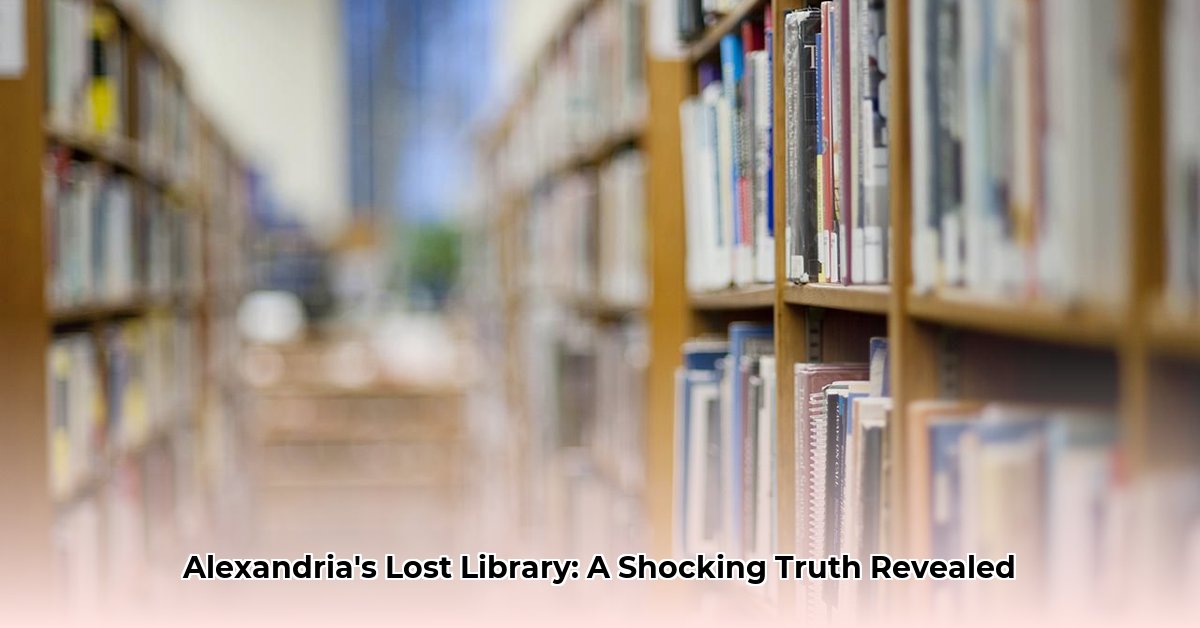
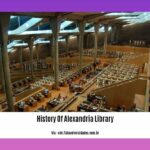

![- [History Of Alexandria Bay Ny]: Unveiling the Enchanting Past of a Thousand Islands Gem History-Of-Alexandria-Bay-Ny_2](https://www.lolaapp.com/wp-content/uploads/2024/02/History-Of-Alexandria-Bay-Ny_2-150x150.jpg)

